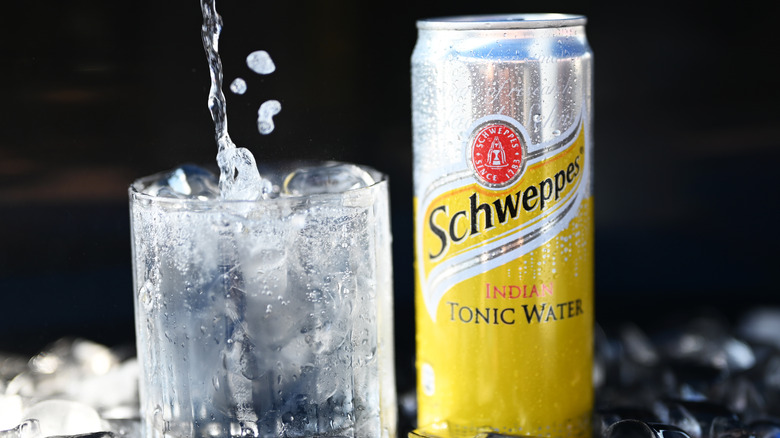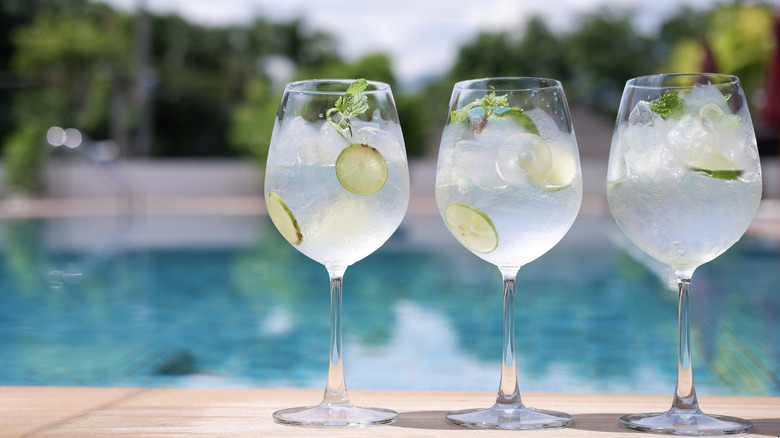The Reason You Shouldn't Open Room Temperature Tonic
No home bar is complete without tonic. It is the better half of gin and tonic, one of the most beloved cocktails, and per Distiller, it also goes well with tequila blanco, dark rum, vodka, bourbon, and amaro, too. G&T connoisseurs may need no explanation as to why the concoction tastes as divine as it does, but Thrillist dug deeper into the science of it and found that when mixed together, the molecules in gin and tonic attract each other and form aggregates that make your mouth and nose collect interesting notes and flavors.
To take things up a notch, you can add ice and experience an unmatched crispness which begs the question: why does the divine cocktail taste better when chilled? The answer, as Epicurious aptly puts it, lies in the bubbles. Even if you pick the best brand of tonic for your sacred G&T hour, the level of carbonation in your drink (among other things) is directly proportional to the crispness and the pleasure you derive from it.
Cold tonic is good tonic
It all starts with keeping your unopened vessel of tonic chilled. To best preserve the carbonation, every ingredient, including your liquor, should be chilled in advance, Epicurious advises. As Boston bartender Fred Yarm told the outlet, carbon dioxide "leaves warmer liquids faster and bubble retention is everything," so room temperature tonic should never be opened unless you want a flat drink.
While we're on the subject of carbonation, it is also helpful to know that the way you pour tonic also affects the level of carbonation in the resulting concoction. Drinks expert and Managing Director of Black Leaf Events, Michael Stringer told Good Housekeeping that tonic should be poured slowly by tilting the glass sideways to slow down the release of carbon dioxide. Pouring it too fast can leave you with a flat glass of G&T. Over-stirring is also a big no-no. Further sage advice is to use a bar spoon to pour the tonic into the gin to avoid premature carbonation loss, per Good Housekeeping.

